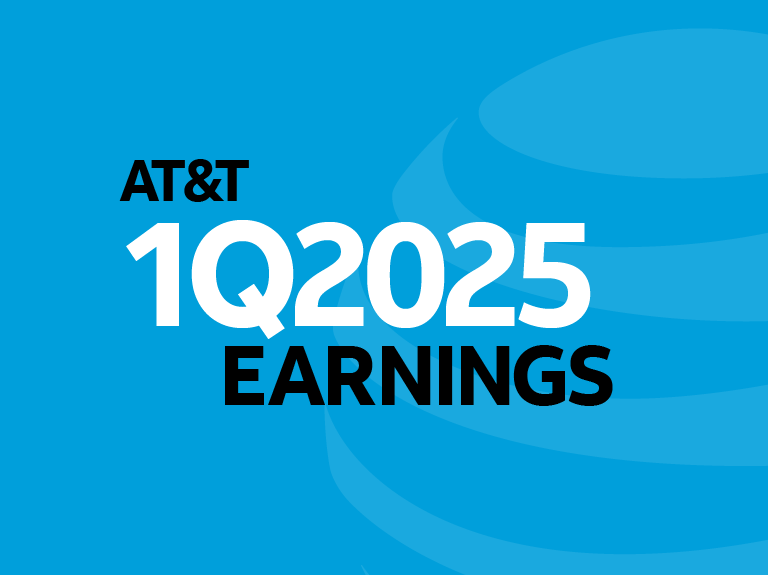AT&T Provides Updates to Shareholders at JP Morgan and MoffettNathanson Conferences
The chief executive officer and chief financial officer of AT&T (NYSE:T) gave updates at two events today. Randall Stephenson, chairman and CEO, spoke today at the JP Morgan Global Technology, Media and Communications Conference. John Stephens, chief financial officer, spoke at the MoffettNathanson Media & Communications Summit. Included in their comments were key updates for shareholders:
Capital allocation. AT&T continues to expect to achieve an adjusted net debt-to-EBITDA ratio in the 2.5x range by the end of 2019. The company has already announced $5B in asset monetization, against its goal of $6 billion to $8 billion in net asset monetization for the full year. The company expects by yearend to have repaid 75% of the $40 billion it borrowed to acquire Time Warner Inc. last year. To the extent the company overachieves on cash generation this year, AT&T said it will look at using a portion of its free cash flow after dividends to retire some of the shares it issued in conjunction with acquiring Time Warner, particularly with shares at today’s levels. Looking to 2020, AT&T said it will continue to generate significant cash flow, and it will continue to de-lever — though not at the same pace as in 2019.
U.S. wireless service revenue growth. AT&T continues to expect full-year 2019 wireless service revenues to grow, which it expects will contribute to wireless EBITDA growth. The Mobility segment represents about half of AT&T’s total EBITDA. Catalysts for growth include postpaid smartphone adoption, the move to higher-ARPU unlimited plans and continued Cricket subscriber growth. The company also expects its FirstNet build and superior network quality will help it attract and retain customers. AT&T has been recognized by third parties for having the nation’s fastest1 and best2 wireless network.
WarnerMedia had a strong first quarter and is organized for the future. AT&T’s WarnerMedia unit plans to beta launch a subscriber video on demand (SVOD) service in the fourth quarter of 2019 with a full launch planned for first quarter 2020. This service will be anchored by premium content from HBO, Warner Bros. and Turner, augmented by the addition of original and third-party content in the longer term. The company expects this service will have millions of customers, expanding the audience for and increasing engagement with WarnerMedia content. The company spends about $14 billion annually on content. It plans to take back some owned-content previously licensed to others and instead make it available on the upcoming WarnerMedia SVOD service.
FirstNet momentum. As previously announced, AT&T’s FirstNet deployment is ahead of schedule with more than 600,000 connections across more than 7,250 public safety agencies. The company expects FirstNet subscriber growth to ramp throughout 2019. On average, for every first responder subscribing to FirstNet with a personal device, the company adds an additional family member as a subscriber. The FirstNet build has also allowed AT&T to expand its sales distribution network into new areas it didn’t previously serve.
5G expansion. AT&T has mobile 5G in parts of 19 cities today and expects to have nationwide 5G coverage by early 2020. AT&T is focusing first on business customers and the use cases and applications that benefit from the high speeds and ultra-low latency this spectrum will eventually offer. For example, the company is working with hospitals, manufacturers and others. AT&T also plans to offer two 5G smartphones in 2019, which it expects to promote to early adopters. In a recent test on its live 5G network and using a commercially available device, AT&T saw data speeds faster than 2 Gbps.
Focus on profitability in Entertainment Group. AT&T continues to focus on profitability in its Entertainment Group and expects to meet or beat its target for stable EBITDA of around $10B in both 2019 and 2020, with growing broadband revenues and continued secular pressure on linear video subscribers. The company expects elevated levels of linear video declines throughout 2019, noting that second-quarter subscriber losses in the past two years have averaged more than 100,000 higher sequentially than in the first quarter. In premium video, it expects that margins will improve as 2-year price locks expire. About 1.6 million video subscribers remained on these price locks at the end of the first quarter, which the company expects to decline to zero by yearend. In 2020, the company expects premium TV subscriber losses to improve as a result of no subscribers on two-year price locks, improved churn and additional subscribers from the launch of its thin-client video product. The thin-client product will offer premium streaming at a lower price than DIRECTV and with lower customer acquisition costs. AT&T also expects continued support from higher broadband revenues, driven by higher ARPUs as more subscribers move to its fiber platform. The company anticipates these will combine for improved margin trends in 2020 versus 2019.
Reiterating 2019 guidance.3 For full-year 2019, AT&T expects:
- Free cash flow in the $26 billion range
- Low single-digit adjusted EPS growth
- Dividend payout ratio in the high 50s% range4
- End-of-year net debt-to-adjusted EBITDA ratio in the 2.5x range
- Gross capital investment in the $23 billion range5
Webcasts from the two conferences will be available for replay until June 28, 2019:


